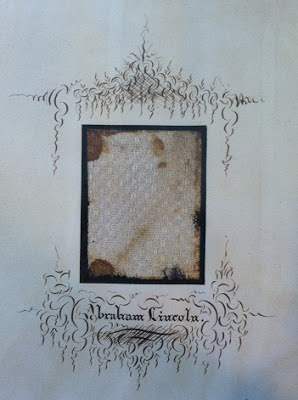 |
| Portion of an advertisement for dry goods at Charles Martin's store in the Mohawk Mercury, February 9, 1795. Grems-Doolittle Library Collections. |
This blog entry is written by volunteer Robert J. Jones.
The Mohawk Mercury was
a weekly newspaper published in Schenectady
during the last decade of the 18th century. In the Historical Society’s collection, we
have microfilm of the paper between February 9, 1795 and March 13, 1798. Published originally by Abraham Brockaw and
Cornelius Wyckoff, Wyckoff
became the sole publisher in September of 1795 according to a notice of the
dissolution of their business partnership printed in the newspaper. After this notice, no further mention is made
of Brockaw, and he fades into history from the pages of his former paper. Wyckoff ,
on the other hand, continues his business of selling books and doing print jobs
aside from the newspaper itself. He becomes
active in various religious groups and uses his paper to promote books and
publications of a religious nature.
According to an August 22, 1954 newspaper clipping from the Union-Star newspaper that we have in the
library, a certain John L. Stevenson bought the paper. It is unclear if
Stevenson continued printing the Mercury,
but in 1799 he was publishing a newspaper under the name Schenectady Gazette (no relation to the present-day Schenectady newspaper),
so it’s possible that he simply changed the name of the original publication. In 1802 Stevenson changed the name of the Gazette to the Western Spectator and Schenectady Advertiser. Finally in 1807, he discontinued publication.
Published
every Tuesday with essentially the same format in all the issues for which we
have examples, the Mohawk Mercury was
never more than four pages long; the first two pages were reserved mostly for
national and international news, with some state information. Pages three and four were almost exclusively
local news and notices, generally in the form of business ads. While the first two pages are interesting in
their own right for a glimpse into the important matters of post-Revolutionary America , the
real treasure of the publication for researchers of local history are the
second two pages. Given the ads and
notices published, the Mohawk Mercury
reads like a Who’s-Who of 1790’s Schenectady . In total, some 1,439 individual names are
printed on its pages. Scanning the list
of surnames gives an immediate impression of the ethnic make-up of the city at
that time. Not surprisingly, the
overwhelming majority of names are ones we closely associate with old Schenectady : Van Antwerp,
Veeder and Vedder, Van Eps, and Vrooman just to stick to the V’s. Most of the names are of course Dutch, but
names from other backgrounds are also present such as German, Welsh, Slavic
(probably Polish), English, French and Scottish.
A few of
those indexed in the paper have no last names. At least four slaves, Jacob, Jap, Bawn and
Joe are listed with no surnames, and of course all had run away. Run-away wives were also a frequent subject
of public notices with warnings not to harbor or help them. During election
season, long lists of committee members were published showing who supported
each candidate and telling us where these people lived. Often these contain the names of many of the
same businessmen and other worthies who variously ran ads in the paper. Since the issues we have date from the
founding of Union
College
Considering
that few other sources for Schenectady
give us this kind of information for this time period, the Mohawk Mercury is a treasure trove for researchers. Until recently, however, accessing this
information has been difficult and time-consuming because no complete index
existed. A partial index from issues nos. 9–30 was completed some time ago, but
considering that the final issue we have was no. 170, very little information
was actually accessible. In the fall of
2012, I completed the index, and it is currently available for use at the
Society’s library. It can also be found online here.







